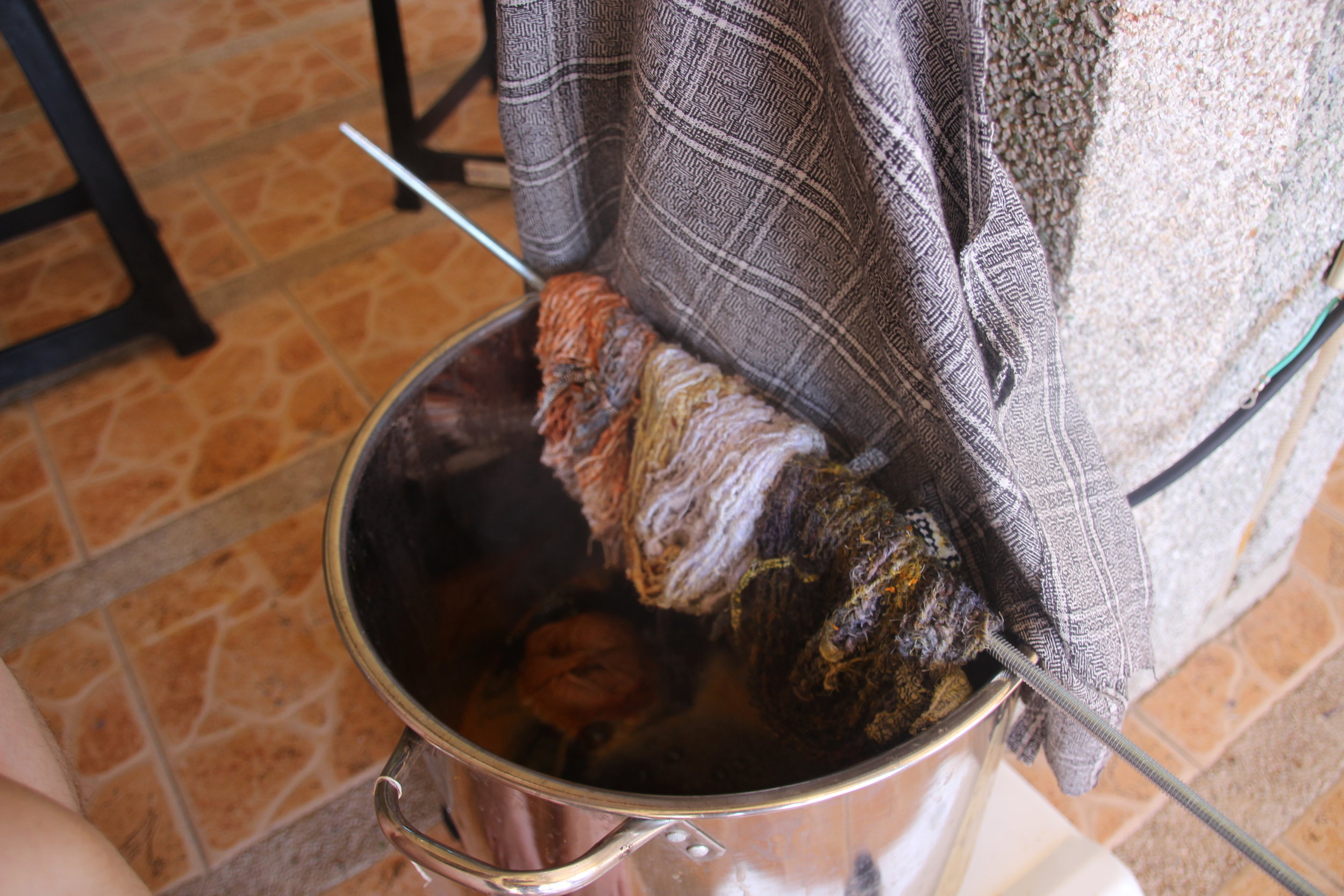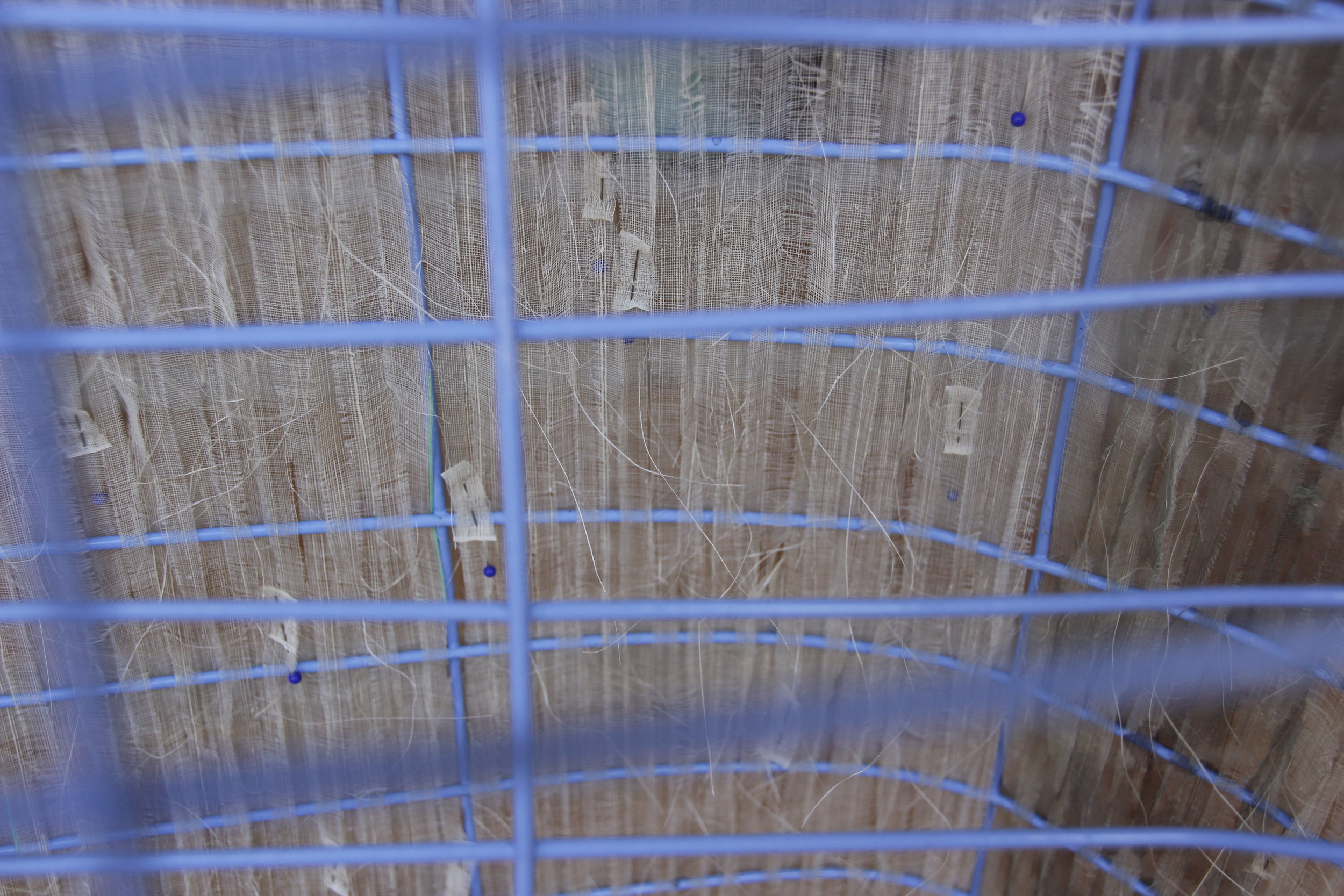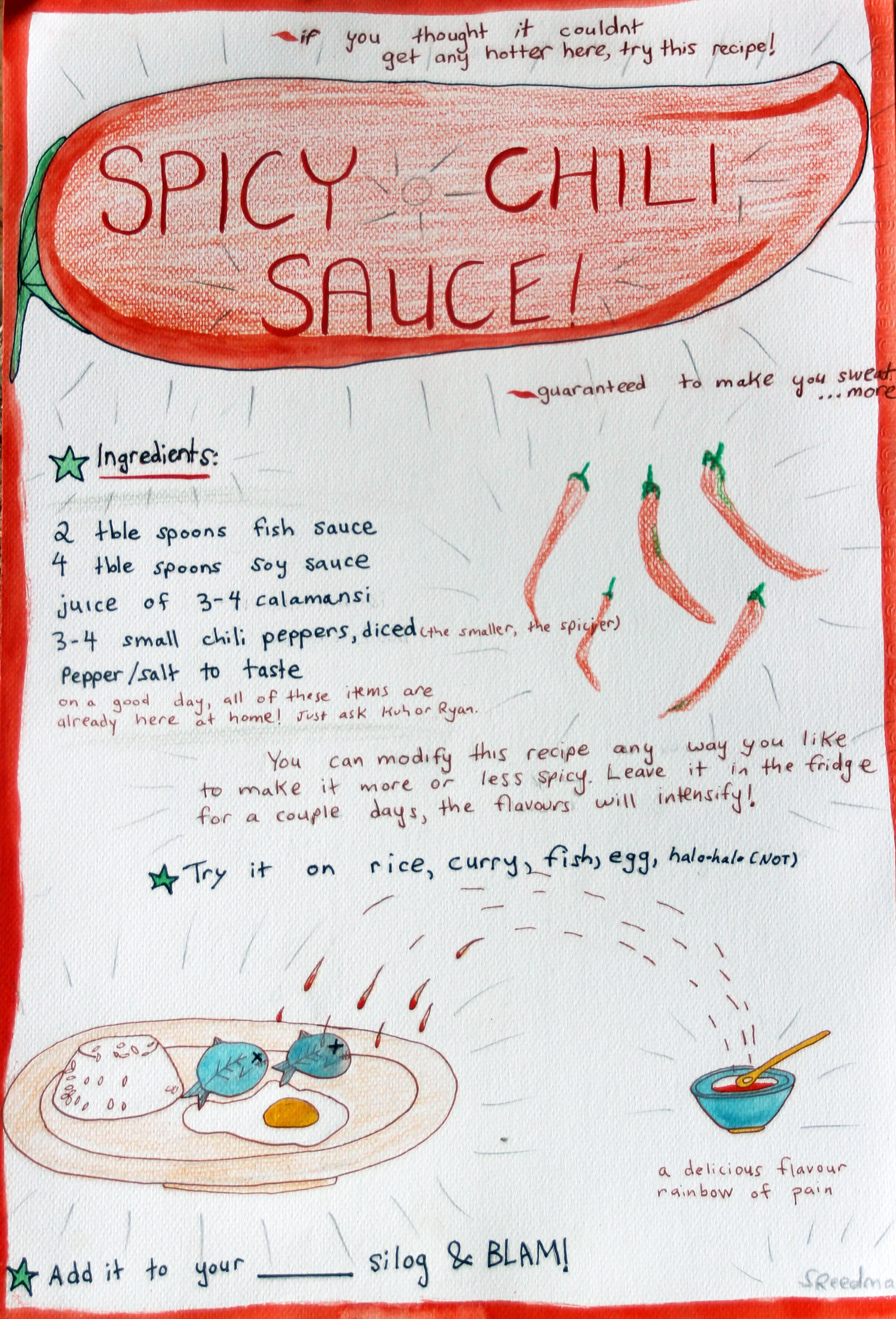The Steady and Deliberate Process of Danielle Gotell
Multi-disciplinary Artist
Vancouver, BC
May 2017
Danielle Gotell’s life’s work is poetic in its rigour, entrenched in the search for perfection that cannot be achieved without a particular brand of discipline. Working in Batan made precision impossible to attain. Material demands were affected by climate, availability of resources and language barriers. Danielle’s investigations and work had to change. The lessons were hard earned and almost at the cost of her projects. However, Danielle’s ability to adapt and shift accordingly, was an asset that carried the work to completion.
Danielle proposed a project that utilized clothes collected over decades by Elmo Del Rosario, the Residency’s namesake. She chose a few for their variation in material, colour and pattern. Equipped with a textile carder, drop spindle and modular loom, her process started with deconstructing Elmo’s shirts. Silk, cotton and polyester blends were broken down back to its fibres in preparation for carding. After they were carded, the raw fibres were shaped into caterpillar-like rologs making it ready for spinning and turned into yarn. Each stage was involved, labour intensive and took up much of the days. Helping hands were required to ensure steady progress.
Inspired by the colour palette of the house, Danielle was in search for particular colours from which to dye the home spun yarn.
Inspired by the colour palette of the house, Danielle was in search for particular colours from which to dye the home spun yarn. This proved difficult, requiring to work against limited time.
Danielle used colours from a myriad of sources. Soft pinks, bright oranges, vibrant greens, rusty reds, dark greys, blues and soft lavenders were achieved through a great deal of trial and error. Brightly coloured flowers from neighbouring gardens were gathered which promised beautiful pigments. However, most of these were flushed out once boiled, rendering the delicate petals into translucent fleshy slivers. The hunt for pigment was quickly redirected from gardens to less predictable sources. A quick search in the residency’s toolshed, produced rusted metal tools, old doorknobs, screws and nails that were boiled to pull out delicate greys and soft blacks. Following an internet advice, avocado peels were boiled to extract a soft pink. This was not as successful as some sites suggested.
The projects Danielle initially planned to complete during her residency evolved with unexpected results.
Various wet markets and grocery stores were scoured for more natural pigments like achuete, tumeric root, kasubha, red onions, Paprika and Avocados. Though these easy enough to find, others like pandan and talisay gained mythical status the longer they evaded the search. Often, vendors provided directions that were hard to decipher and seemed to point to dead end leads. At the Kalibo market in particular, multiple laps were made before realizing the labyrinth of stalls looped into one big circle. Under the heat, crowds and pungent smells, all senses were stimulated causing a discombobulating experience. Later, it was discovered these ingredients would be impossible to find in the market because pandan and talisay can easily be found growing wild in gardens and empty lots.
With the abundance of plantains available, Danielle decided to use the natural tannins in the skins as organic mordant for the plant based dyes. The water used to boil the plantains over several hours was then reused to boil the coloured threads in the dyes. Nothing in the process went to waste and the actual plantain meat was utilized to make bread for the next meal. Alum was another alternative used for the same task. This was easy to find and available in either powder or rock form.
A visit to Dela Cruz House of Piña, a Piña and native goods supplier in Kalibo, inspired the introduction of Piña fabric into the project. Made of fibres from pineapple leaves, this durable silkened material traditionally used for native costumes and other textile wares, referenced Philippine craft directly. Presenting new challenges and frustrations, Piña became aother preoccupation and new set of skills to be learned.
The projects Danielle initially planned to complete during her residency evolved with unexpected results. Time expanded and contracted with the heat, compounding Danielle’s challenges. The beginning of Danielle’s residency were full of long days occupied by experiments, research and field trips. In the final week, the nights seemed to chase the days until there were few hours left to complete the work.
Throughout her residency, Danielle’s studio work was driven by her ardent philosophy of making, in which each element of production are distilled to its most fundamental using natural materials. However Batan presented a climate of antithesis, where nature (for all its meaning) rules above all else.
The resulting works are a beautiful visual account of the triumphs and failures, control and happenstance that swayed the experience and moved the process.




















































